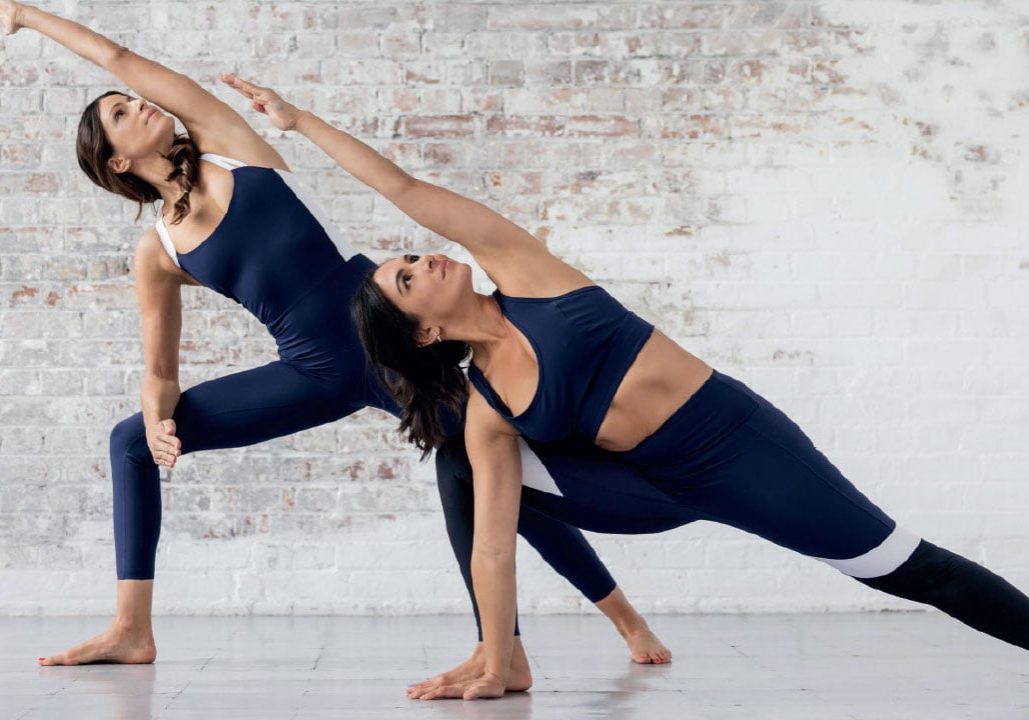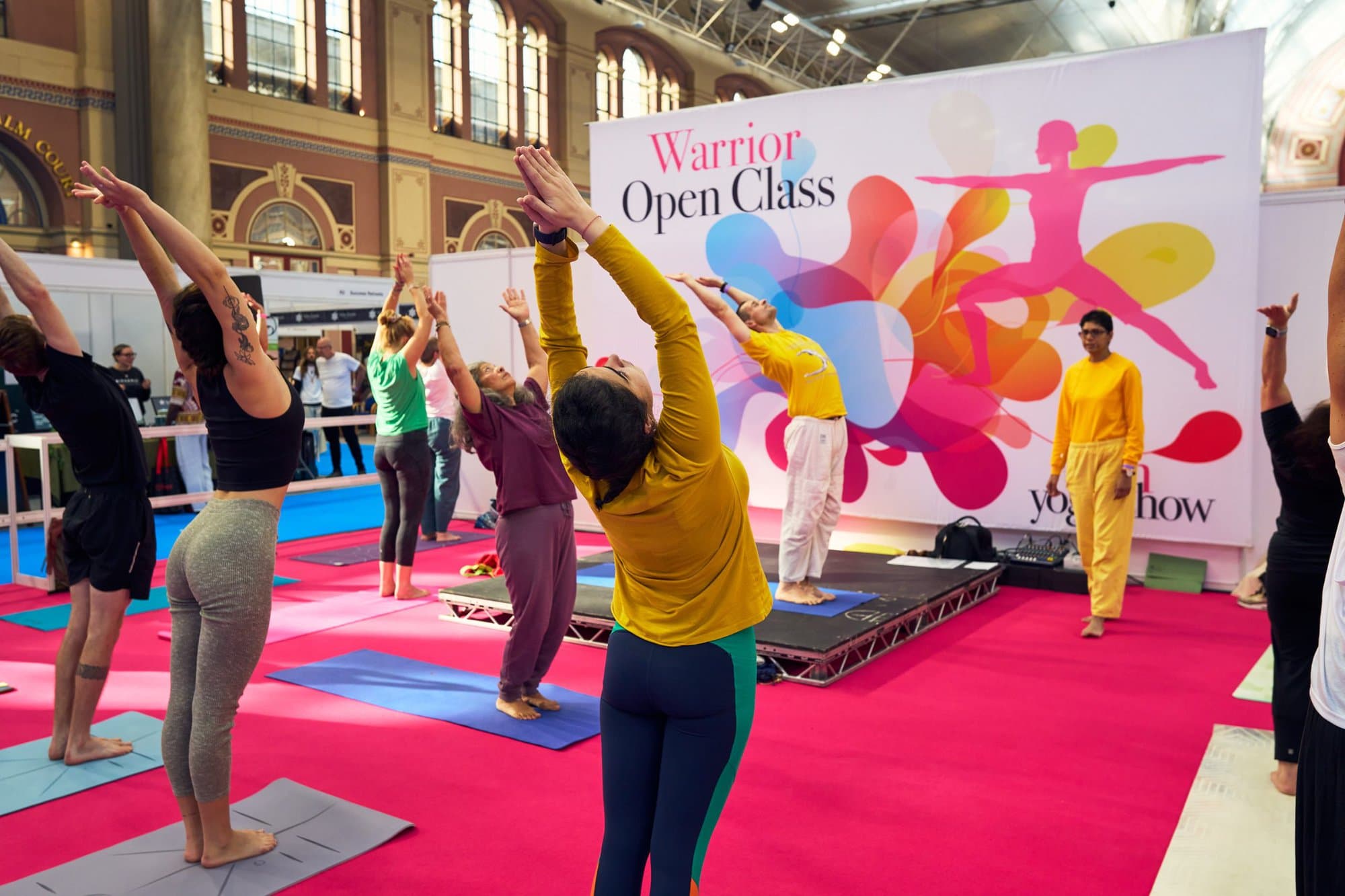
Yoga Myths Uncovered
Have you ever been in a yoga class and heard a cue that doesn’t make sense for your body? Or have you ever been afraid to try something new because you might hurt yourself? Two of the UK’s top yoga teachers and creators of Alba Yoga Academy, Hannah Barrett and Celest Pereira, are here to help share the science behind some of the yoga world's most popular myths
Reading time: 5 minutes
“You are fragile”
Yoga cues are littered with advice about avoiding movements and transitions for fear of injury or pain. “Avoid Warrior 1 to Warrior 2 or you will grind away your hip socket”, “keep the knee at 90º or you’ll strain your knees” — or our favourite, “don’t do headstand or you may die”. The underlying message is that you are fragile and that if you step outside of the rules there will be consequences.
But is this really accurate? Modern pain neuroscience gives us a different take that is empowering. It teaches that pain is not an input and often not related to tissue damage. Pain is an output the brain chooses based off of how safe it feels.
If your brain is worried about your safety, it will produce pain in an attempt to alter your behaviour to keep you safe. The important thing to note is that the brain is highly suggestive, it works on a predictive mechanism, trying to anticipate where the dangers are likely to come from.
This is where yoga teachers, doctors and therapists need to be mindful of their language. Pain researchers have demonstrated in complex studies that suggestive language is far more dangerous than the very actions it warns against.
Also, the advice offered doesn’t check out against the science on many of these so-called warnings. Jenna Leser, a bone health scientist recently interviewed on the podcast ‘Love At First Science’, explained how movements like Warrior 3 to Half Moon will not grind away your hip sockets, but instead will strengthen the joint and the surrounding muscles.
She also explained that headstand, if built up to slowly and progressively, is great for cervical bone density. And there is a plethora of scientific articles that detail the benefits of moving your knees over your toes.
If you think that moving into a certain pose, or beyond a certain range is not appropriate for your body, then we encourage you to honour that. What we would like to change is blanket advice, not avoid these movements for all people. Like most things, context matters, and what is contraindicated for one person might be healing for another.
“Arms up, shoulders down"
“Inhale, arms sweep up as you keep the shoulders away from the ears” This cue came from the desired aesthetics of the dance world, where elevated shoulders lacked grace! Yoga teachers substantiate the use of this cue to reduce tension in the upper traps and avoid compression in the neck. But is this accurate?
During shoulder flexion (arms lifting up), the shoulder blade (scapula) and the upper arm bone (humerus) should work together to coordinate the movement. This is known as scapulohumeral rhythm and describes how these two bones work together to allow smooth and efficient motion of the arm.
When we raise our arm overhead — such as in poses like utkatasana (chair) and vrkasana (tree) — the scapula needs to elevate along with the humerus, so that the humeral head doesn't run into the roof of the scapula (acromium). Most practitioners agree that depression of the scapula during shoulder flexion reduces the shoulders range of motion into flexion. Physiotherapists use scapula humeral rhythm as an assessment tool in diagnosing shoulder issues. When the scapula remain depressed this is a red flag for dysfunction that needs to be corrected.
Some teachers argue that lifting the shoulder to the ears results in tight upper trapezius muscles. However, when we speak to clinicians, many agree that tight upper trapezius muscles are often a result of anterior head carriage (aka ‘tech neck’) where the deep neck flexors aren’t being recruited as they should. This overloads the upper trapezius muscles as they try to do the job for the deep neck flexors.
Next time you are in class and hear this cue, understand that it likely comes from a good place. But practice the concept of self-study (svadhyaya) and lift the shoulders towards the ears noticing how it feels in your body and if it works for you then that's awesome.

“Core, core, core”
Now we are all for a strong core but what we also really want in our students is a reflexive core. This refers to the automatic activation and coordination of the muscles that make up the core in response to movements or external forces. Think about a child jumping into your arms and how your core works, without you thinking about it, to keep you stable against those forces. Also, the core isn’t just the ‘abs’ it includes the transverse abdominis, pelvic floor, diaphragm and multifidus and they work as a team. Leading the charge is the diaphragm, which responds to each breath and changes shape accordiningly. When the diaphragm moves, the rest of the core should also move in response to these cues.
Cueing core engagement in classes isn’t necessarily bad but it is a short-term solution as we want to get people's bodies working reflexively and to the right degree. For example, low lunge (anjaneyasana) will use the core but not as much as boat pose (navasana). All muscles activate according to the load in question. Imagine trying to drink a glass of water if your bicep was activating 100%.
A wonderful way to hack into this reflexive engagement is by thinking about external cues. An external cue focuses the attention on a specific external point or reference rather than muscles within the body. If you stand up where you are and imagine there is a hand hovering above your head. Grow tall into that hand and at the same time sink your feet into the floor. As you do this, notice how your body lights up and the core engages without you consciously asking it to.
Conscious core engagement is the starting point, but not the finish line. Eventually, this should be automatic, leaving your mind free to focus on higher priorities.
“The only way to breathe is Ujjayi”
Ujjayi has a unique benefit that is often not spoken about in the yoga world. In your nervous system, branching off of your brainstem, there are 12 cranial nerves. These nerves help to modulate your fight or flight system and govern the head, throat and facial movements. When we activate the vocal cords in ujjayi breathing we also stimulate cranial nerve 9, the glossopharyngeal nerve.
For some people this helps to calm the nervous system. However, like with all things related to the human body, not all people benefit from this cranial nerve activation. Some find they experience greater fatigue, increased anxiety and even dizziness and nausea.
Some practitioners have also found that the use of ujjayi left their vocal cords swollen and painful. Many vocal coaches equate ujjayi to whispering, which numerous scientific studies have shown can damage the vocal cords if done excessively, leading to a raspy voice and persistent cough. The message we want to promote is this: please use it as a tool if it feels right for you! But if you have any doubt, please test not breathing this way and see if it works for you. Matthew Shaw, a vocal coach to the stars, summed it up perfectly: “Your vocal cords and glottis should be wide open during respiration and shut during sound production. Keeping them in a half open half closed state, as we see in whispering or ujjai breathing, creates unnecessary vocal tension and isn’t advisable.”
Are you a bad yogi for skipping ujjayi? Not at all! Not a single traditional text on yoga advises to use the ujjayi breath while practicing asanas. The two were combined just once 100 years ago by Pattabhi Jois. Ultimately, we want to empower you to make your own choices around whether or not this is the right type of breathing for you; you are still an amazing yogi even if you choose to skip the ujjai!
If you resonate with anything written here we applaud you for your curious mind that is willing to question authority and listen to your own internal wisdom. Remember, science is always advancing and so should we. It's okay to adapt what you teach and how you teach, it's also okay to avoid what the teacher says and listen to yourself instead.
If you want to take part in a 200-hr online yoga teacher training that is evidence-based whilst still honouring the roots of yoga, a course where you will have lifetime access to the content and be surrounded by a supportive online community, look no further than Alba Yoga Academy (albayogaacademy.com). Use code: OMYOGA to get £100 off your purchase (Hurry the early bird price ends soon!





